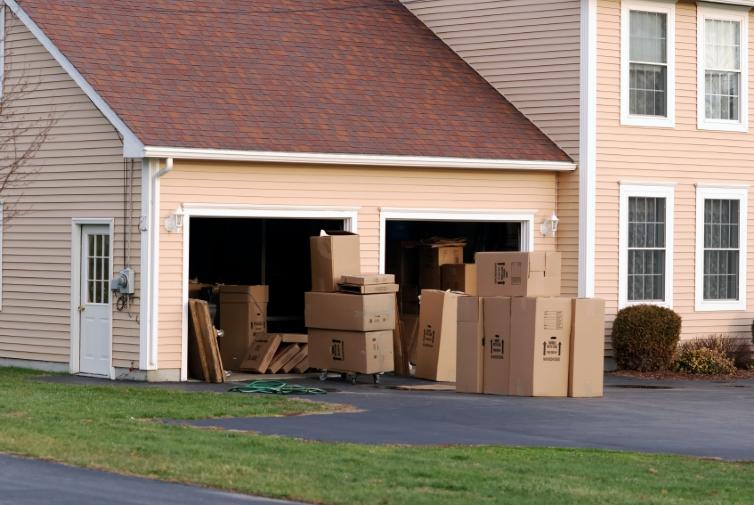How to Pack your Garage: Tips on Moving Tools, Workbenches, Lawnmowers and More
First organize, then pack up your garage quickly and easily

Packing your garage, tool shed or workshop for a move can be a daunting task. While some people use their garages to actually park their cars, store the lawn mower, hang yard tools and athletic equipment the majority of people use their garage as a catch-all. Anything they don’t know what to do with gets tossed in the garage. So the first order of business is to declutter and organize.
Start by safely disposing of old cans of paint, pesticides, fertilizers, oil and gas. Many cities offer household hazardous waste drop collection points. Do the right thing and don’t let this stuff end up in a landfill or water source. Next, toss out scrap lumber, building materials and miscellaneous pieces of things you thought you might need one day. If there are paints, varnish, wood stains or cans of paint thinner you want to take with you, be sure to tape down all lids.
In This Article
Nuts & Bolts
Whether you’ve tackled just one DIY project or hundreds, there’s a good chance you’ve got a collection of screws, bolts and nails somewhere. If you’re well organized and have your fasteners sorted in containers which can be sealed or taped shut you’re ready to pack. If you’ve got a drawer or bucket full of fasteners, hinges and hardware it might be a good idea to make a run to the nearest scrap yard. A good rule of thumb is if you haven’t used in two years, or have no immediate idea what you’d use it for, then it’s time to get rid of it.
Tools
Hand tools like screwdrivers, hammers and pliers should be placed in tool boxes that can be securely closed or in cardboard boxes that can be taped shut. Place tape on the front of any sharp tools, like hand saws, chisels and hand planers to protect the blades. Old socks and rages make good sleeves for these tools. Larger cutting tools like circular saws, drills and routers should be wrapped in newspaper and boxed up, unless you’ve got a case for them or happened to keep their original packaging.
Clamps can be packaged together with shrink wrap or even tied together with long rags in sets of two, three or four, depending on the size. Smaller clamps should go in boxes. Protect larger clamps by taping cardboard, foam or thick blankets around plastic or moving parts. Luggage and duffel bags make great packing devices for tools.
When it comes to moving bulky, heavy tools like table saws, miter saws and planers think about getting some help. If you’ve got a few guys to move these massive items and a trailer or truck to carry them, be sure they are tightly secured while being transported. Consider partially disassembling these items to make them easier to transport. Remove blades from these tools, or cover them so they won’t cut a finger. Just be sure you know exactly how they go back together. It’s a good idea to snap photos of anything that looks tricky.
Workbenches
Consider the shape of your workbench before deciding to devote the energy and space it will take to move it. If the top is more than even a couple years old and is covered with dings and dents it’s worth tossing and replacing once you get to your new place. If you customized your workbench there’s a good chance you’ll need to customize it again once you move into your new workshop. If possible disassemble the bench for easier transport. If you’ve got cabinets in your shop that can easily be transported consider packing tools in them as long as they don’t become too heavy to move and the doors can be kept shut.
Lawn Mowers & Gas-Powered Tools
Empty all motorized tools of fuel. This not only reduces the risk of spilling gas on your furniture, but also lessens your chances of starting a fire. Most rental and moving companies don’t allow you to transport gasoline or potentially explosive materials. Put tape over the cutting edge of lawn mower blades to protect them during the move, or better yet, take off the blades so you can sharpen them once you get to your new place. Dispose of old gas by taking it to an automotive shop or recycling center.
